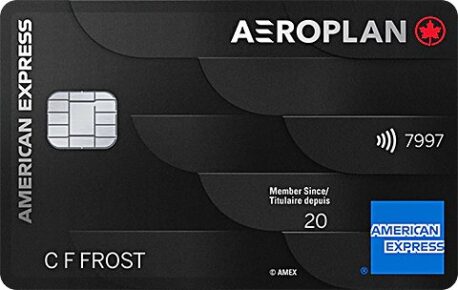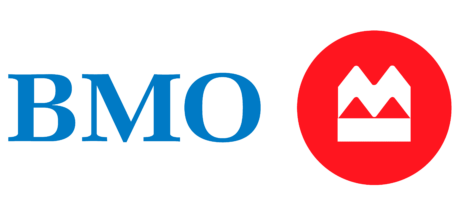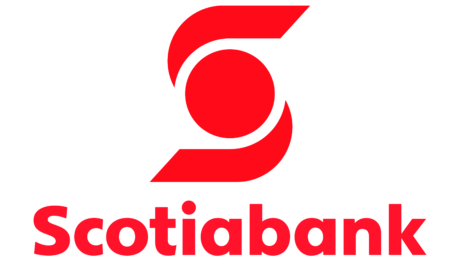If saving a large enough down payment is the obstacle standing between you and buying your first property, the First-Time Home Buyer Incentive might provide just the boost you need.
The First-Time Home Buyer Incentive, or FTHBI, is a shared equity program that allows you to borrow 5% or 10% of a home’s purchase price from the federal government. It’s a unique arrangement, so you’ll want to know as much as you can about it before applying for an FTHBI loan.
Get your lowest mortgage rate with nesto
Stay on the bright side of mortgages with Canada’s leading digital mortgage lender. Secure your commission-free, low rate guarantee mortgage with nesto today.
How the First-Time Home Buyer Incentive works
Home buyers who qualify for a FTHBI loan will receive one of the following:
- 5% of the purchase price of an existing home.
- 5% or 10% of the purchase price for a new construction home.
- 5% of the purchase price for a new or resold manufactured or mobile home.
FTHBI loans are interest-free and must be repaid in full, either within 25 years or when the house is sold, whichever comes first. But because the FTHBI is what’s known as a “shared equity” agreement, each participant owns a percentage of the property.That means you’ll have to repay a similar proportion of the property’s eventual market value, not the dollar amount you borrowed.
At first glance, the FTHBI seems like a golden opportunity for first-timers to get some much needed help. By using FTHBI funds to bolster a down payment, borrowers have more equity at the outset of their mortgage, decrease the amount they have to borrow and have a better shot at providing a minimum down payment or better.
But the shared equity piece of the puzzle, as well as the eligibility requirements, really need to be understood before deciding if the program is right for you.
FTHBI eligibility requirements
To be eligible for the First-Time Home Buyer Incentive, you must:
- Be a Canadian citizen, permanent resident or legally authorized to work in Canada.
- Be a first-time home buyer, meaning you have never owned a home. Homeowners who have gone through a divorce or breakdown of a common-law partnership are also eligible, as are those who have not lived in a home that they owned (or that was owned by their spouse or common-law partner) for the last four years.
- Have sufficient funds to make the minimum down payment.
- Be pre-approved for a mortgage that is more than 80% of the property’s value, and thus covered by mortgage default insurance.
Best Mortgage Rates in Canada
Compare Canada’s top mortgage lenders and brokers side-by-side and find out the best mortgage rates that will meet your need
Applying for the FTHBI
Eligible home buyers can apply for the FTHBI once they’ve been pre-approved for a mortgage by a mortgage lender and found the house they want to buy.
Whether your FTHBI application is approved — and whether the program is useful to you — depends on two key factors:
- Location. In most parts of the country, the mortgage amount can’t be more than four times your qualifying income. In Toronto, Vancouver and Victoria, the limit is 4.5 times your income.
- Income. Your total household income can’t be greater than $120,000. In Toronto, Vancouver and Victoria, the cutoff is $150,000.
Here are two quick examples that show the maximum FTHBI borrowing amounts available in different scenarios:
- Location 1: Ottawa.
- Household income: $120,000.
- Maximum FTHBI loan (4x income): $480,000.
- Location 2: Vancouver
- Household income: $150,000.
- Maximum FTHBI loan (4.5x income): $675,000.
If your household earns even a dollar more than those income thresholds, or there are no homes for sale within the price limits established by the government, your FTHBI loan won’t be approved.
After completing the pre-approval process, fill in the forms found on the FTHBI website. Give the forms to your lender, who will submit them on your behalf.
If your application is successful, you’ll then phone the closing service provider, FNF Canada, at 1 (855) 844-4535 to initiate your Incentive. Do this at least two weeks before the closing date of your home purchase, and be prepared to provide the contact information for your lawyer/notary.
Paying back a FTHBI loan
Because the FTHBI is a shared equity agreement with the government, they essentially own 5% or 10% of your home. That means they’re entitled to a similar share of that home’s value when you repay your FTHBI loan. The more your home appreciates, the more you’ll be required to pay back.
If your home increases in value, your repayment amount will be the lower of either:
- The original loan percentage applied to the current market value of the home.
- The equivalent of 8% annual growth of the original loan amount.
If your home loses value, you’ll pay back the higher of the two amounts.
Let’s dig in a little deeper. In this example, you purchase a $600,000 home using a 5% FTHBI loan worth $30,000. In 10 years, you sell it for $1,000,000.
- Five percent of the current sale price would be $50,000.
- The annual appreciation limit would cap the amount you owe at $2,400 per year, or $24,000 total. Add that $24,000 to the original amount borrowed and you get $54,000.
- You’d be required to pay back the lower of the two amounts — $50,000.
One way to avoid paying back more than you borrowed is by repaying your FTHBI loan as soon as you can. You can repay it at any time you like, without selling your home and without penalty. Your repayment will be based on 5% or 10% of the home’s value at the time, as determined by a professional appraiser.
Will the First-Time Home Buyer Incentive help you buy a house?
If saving a down payment is proving difficult, the FTHBI should help. The larger down payment it creates means applying for a smaller mortgage, which should translate into fewer interest charges, smaller monthly payments and increased affordability.
The FTHBI might save you money, too. We ran a few examples through the Government of Canada’s FTHBI calculator, and the results were positive, if not overwhelming:
- With a 5% FTHBI loan on a $725,000 home in Toronto, an $80,000 down payment and a 25-year mortgage at a 5.5% interest rate, you’d see monthly mortgage savings of approximately $264.11.
- With a 5% FTHBI loan on a $500,000 home in Calgary, a $30,000 down payment and the same mortgage conditions as above, your monthly savings would be $183.14.
Now, let’s compare those savings to how much you might have to repay in five years’ time.
- Let’s say your Toronto home sells for $950,000. You owe the government 5% of the sale price, or $47,500. That’s $11,250 more than you borrowed five years ago, but you saved $15,846 in mortgage payments over that same period. All told, you’re up more than $4,000 in savings — and you own a house.
- If the Calgary property sells for $600,000, 5% of the sale price would be $30,000, or $5,000 more than you originally borrowed. But you’ve saved $10,988 in mortgage payments, so in this case you’ve pocketed almost $6,000 in mortgage savings.
Pros and cons of the First-Time Home Buyer Incentive
Pros
- Actually buying a home. By lowering the cost of your mortgage, the FTHBI could get you into a home when no other program can.
- Building wealth. Sure, you might have to pay back more than you borrowed, but you could still accumulate serious equity in the meantime. If your property doubles in value, you’ll have to pay back twice what you borrowed, but those tens of thousands of dollars will be repaid out of hundreds of thousands of dollars in profit you wouldn’t have earned without the FTHBI.
- Interest-free borrowing. At 0% interest, your FTHBI loan won’t put any added pressure on your monthly finances.
- No penalties. You can pay back the loan in full at any time before the 25-year window closes, giving you an opportunity to exit the program before your house has time to appreciate at too torrid a pace.
Cons
- Limitations. The income and home valuation limits may be too low to help many households find housing that meets their needs.
- The big payback. The shared equity component of the FTHBI program could result in you paying back the government considerably more than what you originally borrowed.
- Appraisal costs. If you decide to exit the program before selling your home, you’ll have to pay for a professional appraisal to determine current market value.
Other assistance programs for first-time home buyers
The First-Time Home Buyer Incentive is unique in structure, but it’s not the only program available for first-time buyers looking for a leg-up.
If increasing your down payment is the goal, you may want to consider the Home Buyers’ Plan, which allows you to put your RRSP savings toward a home purchase without triggering any early withdrawal penalties.
There are several “green home” grants available, which can save homeowners money when they invest in making their homes more energy efficient, as well as the First-Time Home Buyers’ Tax Credit, which can knock up to $1,500 off your tax bill.
There are also grants and incentives available for first-time home buyers at the provincial and municipal level. These programs can be especially helpful if you plan on buying your first home in expensive real estate markets like Ontario and British Columbia.
Frequently asked questions about the First-Time Home Buyer Incentive
To qualify for the FTHBI, you need to stay under two key thresholds. First, your mortgage amount can’t be more than four times your qualifying income, although in Toronto, Vancouver and Victoria, the limit is 4.5 times. Second, your total household income can’t be greater than $120,000. In Toronto, Vancouver and Victoria, the cutoff is $150,000.
If you’re having trouble saving a large enough down payment, the FTHBI may be your only path to homeownership. The FTHBI does, however, create a second loan that needs to be paid back, and you may wind up paying back the government considerably more than you originally borrowed.

Mortgage Affordability Calculator: How Much Mortgage Can I Afford?
Knowing how much house you can afford sets realistic home buying expectations — and can show you where your finances might need a little help.

Find the Best Mortgage Rates in Canada
Compare customized mortgage rates from Canada’s best lenders and brokers for free. Find and easily apply for the lowest mortgage rate for your needs.









